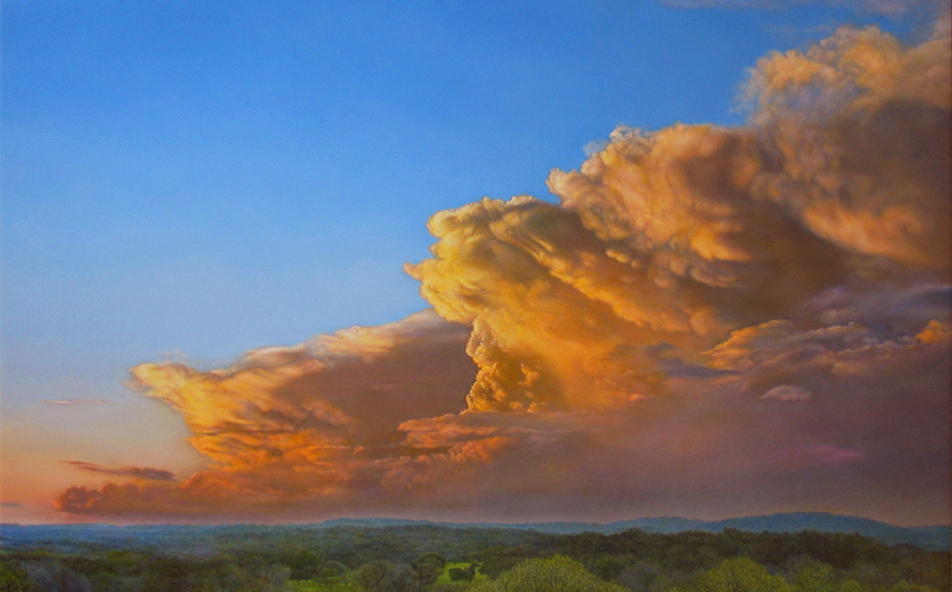
“When the Saints Come Marchin’ In,” a painting by Austin artist Jon Eric Narum, portrays a skyscape at the edge of the Texas Hill Country. Copyright 2006 Jon Eric Narum. Used by permission of the artist.
A message from the editor.
The new normal.
It’s a phrase often used in recent years to describe the disturbing reality and realization that climate change – humanity’s pollution-driven disruption of the climate system – is increasingly amplifying the impacts of events like Texas’ punishing heat wave of 2011 and Hurricane Harvey’s devastation in 2017.
Now that same phrase, the new normal, is being applied to the profoundly unsettling reality of the new coronavirus pandemic. Like man-made climate change, the Covid-19 disease poses vast, global threats, though it fell upon us far more quickly.
Texas Climate News was launched – no surprise, given our name – as a magazine about climate change and sustainability at a time when there was far less news coverage of climate issues. We’re not changing our inaugural mission, or reducing our focus on climate, because of the coronavirus pandemic and its frightening, manifold dangers.
But as everyone is doing now, in so many big and little ways, we’ll be adjusting to the transformative changes, day-to-day and week-to-week, that the disease is bringing.
We’re still going to be a publication that’s mainly about man-made climate change. That phenomenon is, and will continue to be, very much with us in a world turned upside down by Covid-19. But now we also will be regularly publishing articles about the points of intersection between this pandemic and issues surrounding the changing climate.
We’ll also be reporting on parallels and differences between the two planetary issues, as well as the cautionary conclusions that possibly can be drawn from the pandemic and humanity’s responses to it, in order to help our core audience of Texans and everyone else address climate change.
As we do this, we’ll continue to cover climate-specific and closely related subjects. Some may appear, at a glance, to have little if any connection to the coronavirus. But it seems to me, from this vantage point early in Covid-19’s spread, that just about everything in our imaginable future will be connected in some way to this pandemic and its immense, long-lasting impacts.
Accordingly, TCN will strive to be alert to the ways, especially when they may not be immediately obvious, that we can contextualize our climate reporting in terms of the extraordinary world crisis that the new coronavirus has ushered in.
One obvious point of similarity between climate change and Covid-19 is that both of these society-imperiling forces, though the disease has manifested much more rapidly, were preceded by evidence-based warnings from the scientific community. That raises the obvious question of whether the pandemic may make people more willing to accept and act upon scientists’ findings and advice on climate change.
Another likeness is the lesson, taught by scientists and poets and moralists alike, of our interconnectedness with each other and with the rest of nature. As this idea was expressed in a famous aphorism by the influential Scottish-American naturalist John Muir, who lived from 1838 to 1914, “When we try to pick out anything by itself, we find it hitched to everything else in the universe.”
Taking off my journalist hat for a moment, here’s a simple person-to-person wish as you confront the new normal: Try to stay safe and well. Take care of yourselves, your family and friends, and others around you.
